Described as the ‘nursery with no toys’, the Curiosity Approach![]() setting has been repeatedly voted Top 10 Day Nursery in the West Midlands. Their 21st-century pedagogy is widespread, with over 4000 educators working in over 20 countries signed up to their prestigious accreditation. On this blog post, founders Stephanie Bennett and Lyndsey Heller share with us what it is and how you can benefit from it.
setting has been repeatedly voted Top 10 Day Nursery in the West Midlands. Their 21st-century pedagogy is widespread, with over 4000 educators working in over 20 countries signed up to their prestigious accreditation. On this blog post, founders Stephanie Bennett and Lyndsey Heller share with us what it is and how you can benefit from it.
Oh! And if you missed our webinar on The Curiosity Approach you can now re-watch it from the Kinderly webinar library.
It is more than a fad or current trend, it is a modern-day Approach to Early Childhood that takes inspiration from Reggio Emilia, Rudolph Steiner, the New Zealand Curriculum, Te Whariki and the wisdom of Maria Montessori.
We are proud to declare that it is so much more than just creating those aesthetically pleasing and beautiful play spaces for children.
It’s also about the respectful and mindful approach of Emmi Pikler and the teachings of so many of the theorists and pioneers that as Early Childhood professionals we know so well. We take elements from each approach that are fundamental to our daily practice and brings it together in a mindful and heart-centred approach.
This is modern-day approach that fits perfectly in current changing technological times: looking to transform and reset educational practice for our youngest children, bringing curiosity, awe and wonder into Early Childhood and creating those ‘thinkers and doers’ of the future.

We are living in a technological age with children spending endless hours engrossed in TV programs or absorbed in Apps on iPad screens.
Children’s lives also (pre-Covid lockdown) have become increasingly busy, with playdates, extra activities, sports events and clubs. The world is changing for our youngest children, not just today but long into their future.
At The Curiosity Approach® our aim is to empower our youngest children, laying down the foundations for the future, to instil a lifelong love of learning, replacing the current gratification of stickers, tick charts and rewards. To stop the pushing down of academics and pouring information into the tops of heads. We believe in educating our children through head, hands and heart, instilling those characteristics of effective learning.
Active learning, critical thinking and enjoyment as children play and learn. To get children outside, to embrace nature and to protect our planet in the process.
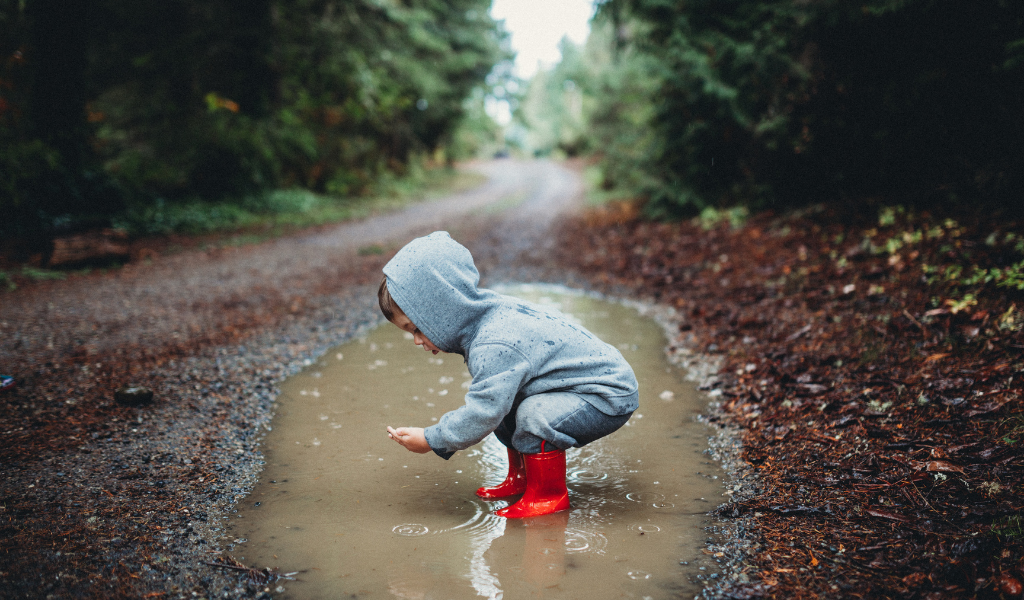
To save our children’s childhood in the HERE and NOW, enabling them to play and discover. Unrushed and unhurried and removing the pressures of test, targets and academic circle time. Play is sadly being lost through much-used screen time and technology. We need our children to explore, be inquisitive and to tinker. To have fun and seek adventures in the great outdoors. To play and imagine a story, to interact and socialise with their peers. To ask questions and not seek solace in a 2D technological devices.
Next are some ways our approach benefits children and adults in Early Childhood…
Babies are born active learners, with a natural curiosity to figure out how the world works. They are eager to explore and discover.
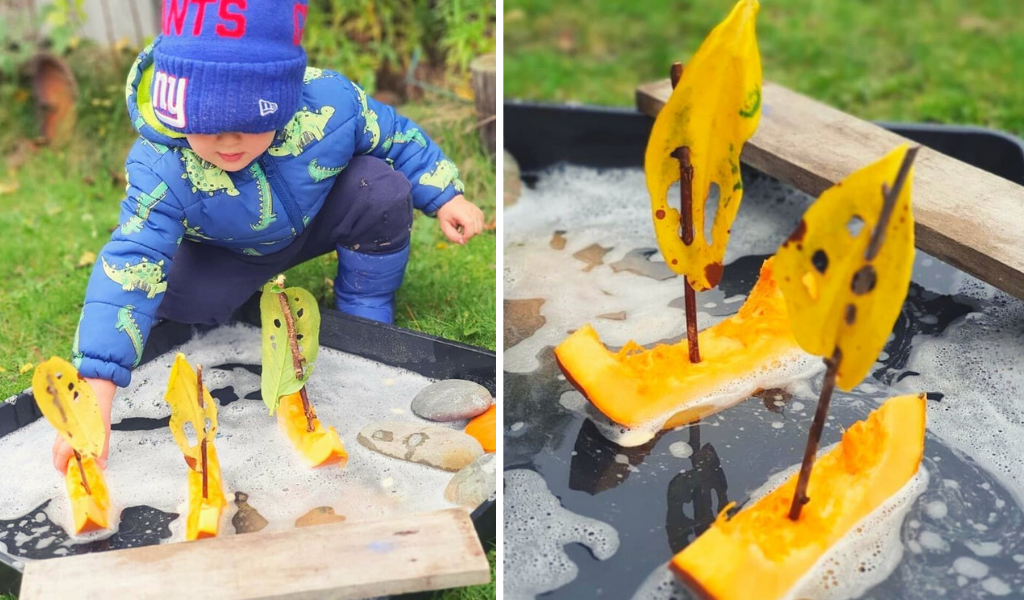
It’s an intrinsic desire that sadly over time the Early Childhood system has become a race to prepare them for school. Instead of enjoying this precious moment in time, to play and be happy. Pre-schools have become just that! PRE school, drip-feeding academics into the tops of their heads. At The Curiosity Approach® we believe Early Childhood Educators have a responsibility to support and reinforce this innate curiosity to give children the confidence to develop their own theories about our incredible world. To take our foot off the accelerator of learning and let children PLAY unhurried, un-rushed by tests, targets and formal next steps.
By adopting The Curiosity Approach®, it enables educators to bring joy and happiness to Early Childhood as children follow their own ideas and Schematic learning styles. Children’s curious minds are open and flexible and their hearts trusting and generous ready to be filled will the continuous joy of learning.
We feel that through our mindful and forward-thinking approach, educators have a growing and ongoing deeper understanding of play. To truly evaluate the importance of understanding child development and the true unfolding child. It’s a deep meaningful commitment from a mindful team of passionate educators to place CHILDREN, provision and practice at the centre of everything we do.
One of the many benefits we see of The Curiosity Approach® is that Early Childhood professionals have their love for their work reignited.
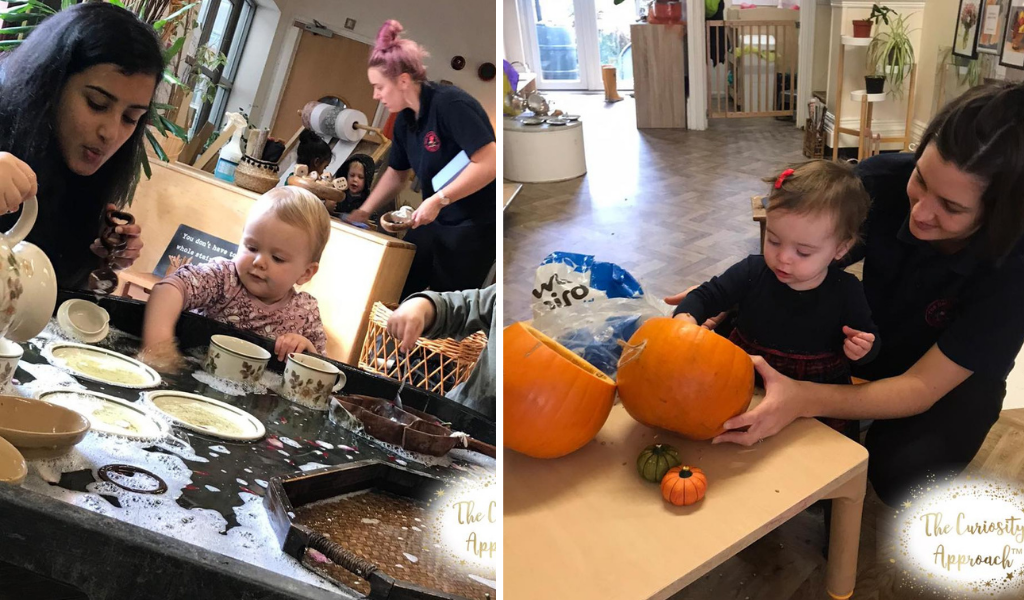
Sadly, over time many educators have become disillusioned by their careers, feeling that paperwork has overtaken the desire to engage, play, connect and build relationships with children. That electronic gadgets and toys are ‘playing’ more than the children do! Due to rushed and hurried schedules, routines and academic teachings of our youngest children, children are losing the ability to think, be creative, imaginative and the essence of childhood is being sucked from our provision walls.
At The Curiosity Approach® we are renowned for our calm and tranquil play spaces, to step away from the brightly coloured traditions of primary colours.
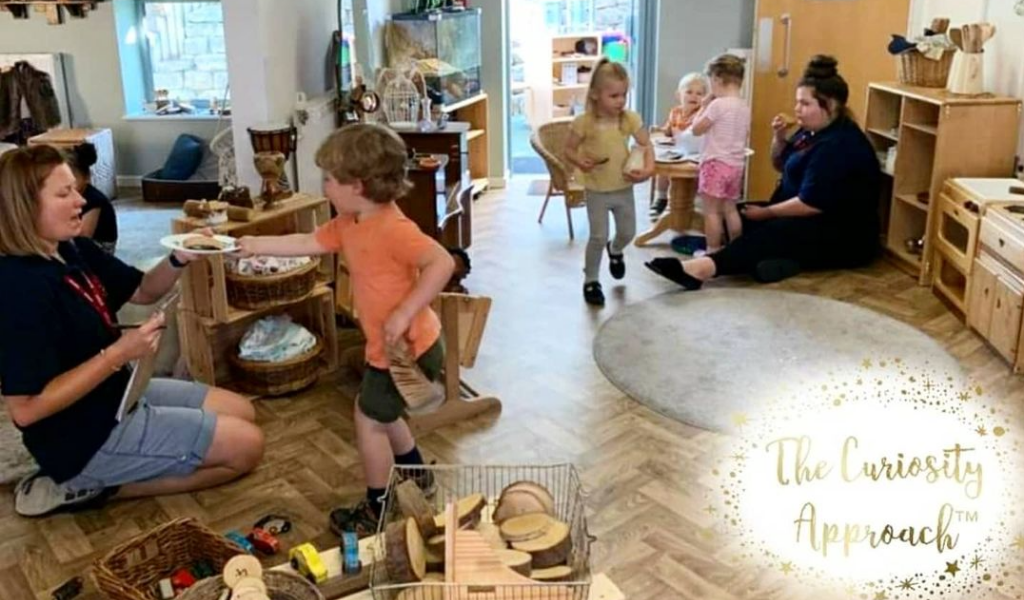
Much research is available that overstimulation can have a detrimental impact on children’s concentration, mental health and wellbeing. We fill our environments with neutral tones, soft furnishings and comfy spaces for children to feel safe, relax or retreat. A haven of safety that is an extension of home and not a watered-down version of school.
We are poles apart from an institutionalised feel of many academic settings and are delighted to see our approach being embraced across the Early Childhood community. Our Curiosity Approach® settings are the children’s play spaces and we feel that by filling them with cosy, comfortable places to play and engage with friends, children feel more relaxed, content and those important foundations for learning and self-actualisation are laid down, in preparation for deep learning, enjoyment and children to flourish.
At The Curiosity Approach® we have swapped the brightly coloured plastic toys and introduced authentic items and real resources.
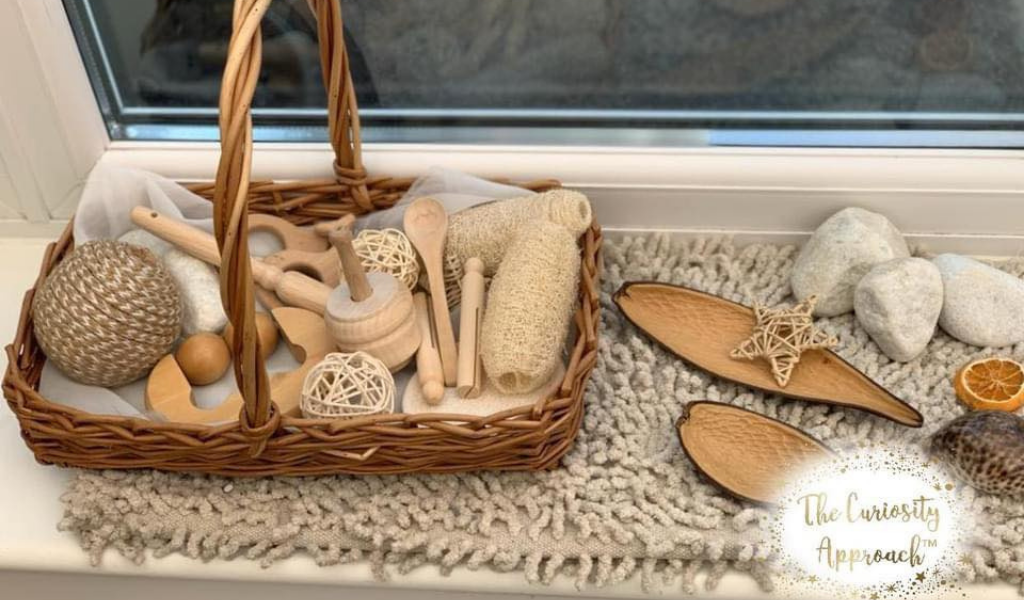
This has many benefits, one being sustainability and saving our planet from the constant purchase of plastic toys. Commercialised academic resources that once again are infiltrating children’s play.
Sadly, toys are becoming so intelligent that they play more than the children do, they beep, flash lights and are entertaining our children. Children are therefore becoming passive participants in their own play, being entertained instead of those active learnings and its sad to say even our youngest babies have toys that have academics drip fed into their play! ABC and colour recognition are part of the design of baby gyms for non-mobile children?
To aid physical development of our children we take inspiration from Pikler, allowing children to move and unfold without the constraints of baby gyms, baby bouncers, walkers or Bumbo seats. This ensures children develop at their pace without leapfrogging over important developmental stages, that will have a detrimental impact to balance, their natural gate and their coordination and physicality in later life.
Another important reason we step away from plastic toys is that when handling plastic pretend items such as home corner, tea sets, there are no consequences regarding the care of these items. In our Early Childhood settings, it really doesn’t matter if a plastic tea cup gets catapulted across the home corner or a pretend saucer literally becomes a flying missile from one side of the sandpit to the other! These resources don’t break, they don’t bend, and they can withstand any man (child) handling, mistreatment or total disregard for it, as a piece of nursery equipment!
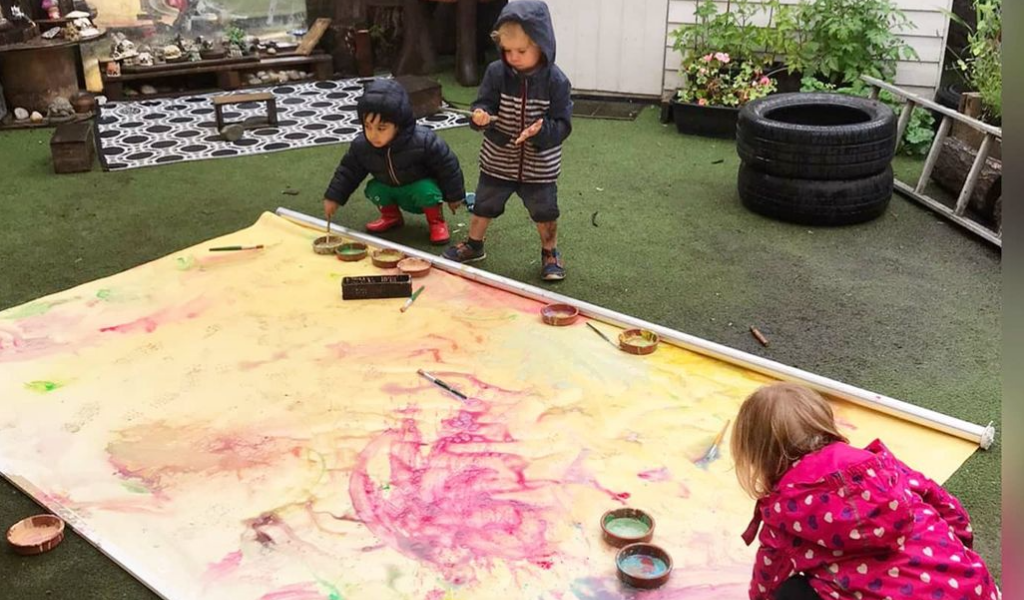
We encourage children to manipulate larger items that develop fine motor skills and we embed cultural diversity by allowing children to play, engage and handle a wide and varied of multi-sensory resources from a children’s home life and those of the wider community.
Through the use of authentic resources, we also prevent the gender divide of pink and blue toys and we offer opportunities for children to play unrestricted, opening up a world of possibilities to play that would have previously and subconsciously limiting play for both genders. Gender diversity is therefore reinforced and encouraged and ensures quality of experiences for all.
By adopting The Curiosity Approach® we can recycle, upcycle and find a use for all sort of resources that would normally be discarded or thrown away. This in turn saves Early Childhood settings money, saves their pockets and saves the planet in the process. We no longer need to keep purchasing more and more plastic when our homes, garages, car boots, charity shops are filled with treasures waiting to be found.
This in turn helps educators unlearn old habits of tipping out boxes of resources, that have pre-determined outcomes and start critically thinking on the play invitations and provocations they are going to offer to their children. As educators we have to understand our children’s interests and learning styles, to connect with them and know what resources to extend that continuous provision and enhance play.
Loose parts
The use of loose parts is one of the main ingredients of The Curiosity Approach® – items that can be used in a multiple of ways with no predesigned outcome.

Children can combine them, line them up, join them together, transport them. Helping to develop opportunities for creativity, critical thinking, problem-solving, counting and sorting to name but a few, teaching children how to think and not what to think! They provide opportunities for children to engage in types of thinking that leads to problem-solving and theoretical reasoning, to once again develop creativity and curiosity of a wide range of varied objects and resources.
To observe, reflect and offer those quality teaching and learning opportunities. To be mindfully present and they themselves become curious learners and unleash their creativity and inner child. Sadly over the past decade children are losing the ability to think, play and be imaginative, it’s imperative we bring PLAY back to Early Childhood and step away from product art work, tasks and planned activities.
A little-known ingredient of The Curiosity Approach® is the introduction of rhythms and rituals of the day, as inspired by Waldorf Education. These are the times we breathe in and out with children.
Times that we step beyond unconscious autopilot and turn mundane routines into meaningful and heart-centred rituals. To have a meaningful and mindful opportunity to slow down and connect with children, to build those all-important relationships.
For example, at The Curiosity Approach® we believe that mealtimes are not just times of the day for getting staff off on their lunch breaks! They are important moments that allow us all to reconnect, pause and share a sense of belonging with the children we serve. Mealtimes are a valuable and important part of the day and should be given as much respect as any other ‘learning opportunity’.
It’s important as Early Childhood Educators we understand WHY? As part of The Curiosity Approach® it is important that everyone joins together and understand the purpose of change.
Once we understand our why, we are able to clearly articulate what makes us feel fulfilled and drives our behaviour to achieve more and make a difference for the children we serve. When we all know our WHY we have a determination and point of reference that empowers us to move forward and embark on a journey of professional development of provision and practice.
To improve standards of care and make intentional choices for the settings in which we work, our career and our lives. Through a deep understanding of why we are able to inspire others and join together on a united quest. This understanding draws teams together, improves collaboration, teamwork, motivation and passion.
At The Curiosity Approach® we are inspired by Steiner- Waldorf Education and believe nature needs to be brought into children’s lives at every possibility.
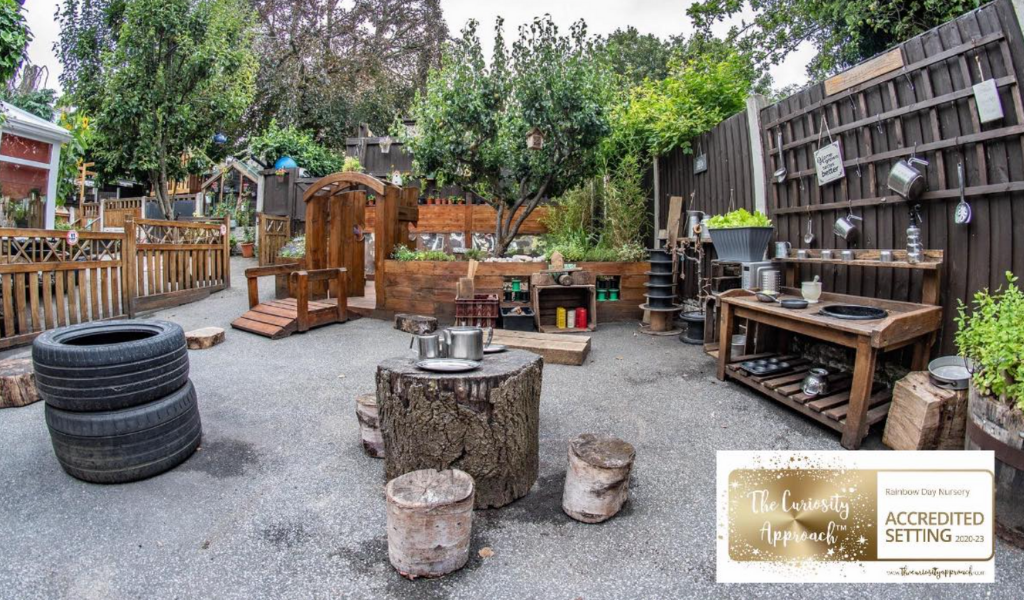
Outdoor play is imperative, and we allow children to flow between indoors and outdoors, seeing the environment holistically and not as two separate play spaces. We bring nature into children’s play, whether this be natural resources at the playdough station, logs or plants throughout our environment. Indoor plants support positive mental health and sense of well-being.
We step away from typical themes and topics and are inspired by the season and the changing of time. Our Curiosity Approach® settings look to help children connect with nature, to be curious about the natural world and to feel grounded and in love with the great outdoors. Throughout our pedagogy it’s about respect for the world where we live and all those who share it with us.
The above headings are just a few of the key ingredients of the pedagogy and there are many more elements that help embed a mindful approach to our pedagogy. It truly is about the high expectations of educators, to reignite their passion and to create a culture that places children at the centre of everything we do. Bringing magical play experiences and opportunities back into play and provision. Raising standards and understanding that we need to offer more for our children in this increasingly technological age. It’s about the holistic development of children, physically, spiritually and mentally. It’s about bringing joy, happiness, life and soul into our practice, to live it breathe it, feel it and together grow a mentally healthy generation of children who have childhoods to remember and cherish.
Steph and Lyndsey x
Founders of The Curiosity Approach®
The Curiosity Approach © 2020. All Rights Reserved.